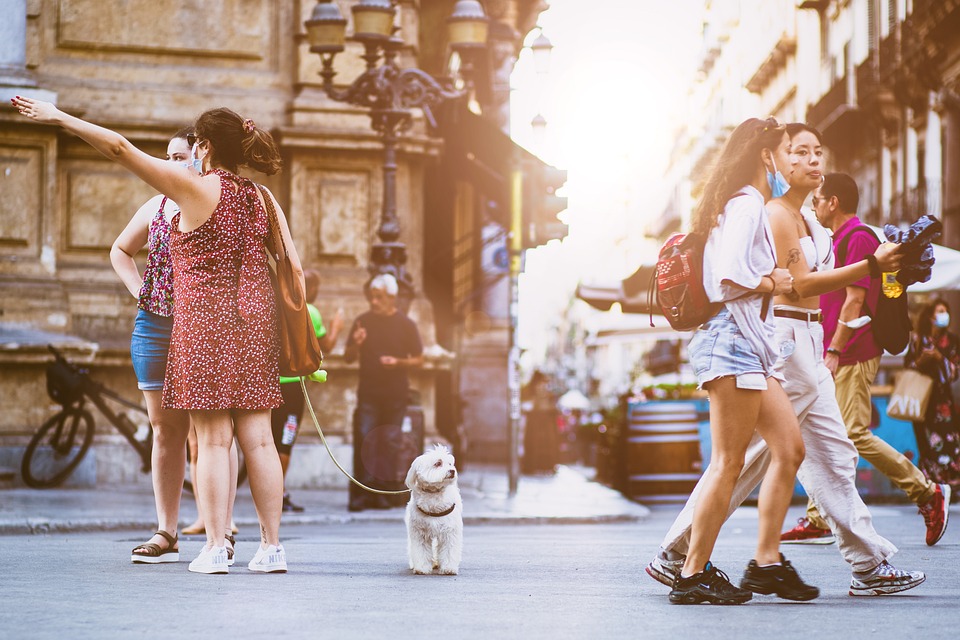*Heading 1: Introduction*
Traveling with your furry friend can be an exciting adventure, but it can also be a stressful experience for both you and your dog. If your canine companion tends to get anxious or overly excited in the car, it’s important to address this behavior and train them to be calm travelers. In this article, we will explore effective techniques and tips to help you achieve a peaceful and enjoyable car ride with your pup.
*Heading 2: Understanding the Importance of Calm Behavior*
Sub-heading: Why is it crucial for dogs to remain calm in the car?
Dogs are highly sensitive creatures, and the unfamiliar environment of a moving vehicle can trigger anxiety, fear, or excitement. These emotional states can lead to various unwanted behaviors, such as whining, barking, pacing, or even destructive actions. Calm behavior not only ensures a safer and more pleasant journey but also helps your dog develop positive associations with car travel, making future trips stress-free.
*Heading 3: Training Techniques for Calm Car Behavior*
Sub-heading: Start with short, positive experiences
Begin by introducing your dog to the car gradually and positively. Start with short and calm car rides, such as driving around the block or to a nearby park. Make sure to associate these trips with positive experiences, such as treats, praise, or a favorite toy. This will help your dog create positive associations with being in the car.
Sub-heading: Use a familiar and comfortable crate or harness
Providing your dog with a familiar and comfortable space in the car can significantly reduce their anxiety. Consider using a crate or a harness that is specifically designed for car travel. These tools not only keep your dog safe but also create a sense of security, similar to their regular resting areas at home.
Sub-heading: Gradual desensitization to car-related triggers
If your dog becomes anxious or excited when certain car-related triggers are present, such as the sound of the engine starting or the car door opening, it’s important to gradually desensitize them to these triggers. Start by exposing your dog to these sounds in a controlled environment, rewarding them for remaining calm. With repetition and positive reinforcement, your dog will learn to associate these triggers with relaxation rather than anxiety.
Sub-heading: Practice relaxation techniques
Engaging your dog in relaxation exercises can help them develop self-control and calmness. Techniques such as deep breathing exercises, massage, or playing soft music can create a soothing environment in the car. Additionally, incorporating basic obedience commands like “sit,” “stay,” or “down” can divert their attention from potential stressors and promote calm behavior.
*Heading 4: Frequently Asked Questions (FAQs)*
Sub-heading: Q1: How long does it take to train a dog for calm car behavior?
Training duration varies depending on your dog’s personality, previous experiences, and current behavior. Some dogs may respond quickly to training techniques, while others may require more time and patience. Consistency, positive reinforcement, and gradual exposure are key factors in achieving long-lasting results.
Sub-heading: Q2: Can I use sedatives or anti-anxiety medications to calm my dog during car rides?
While sedatives or anti-anxiety medications may be prescribed by a veterinarian for specific situations like long-distance travel or severe anxiety, they should not be used as a substitute for training. It’s crucial to address the root cause of your dog’s anxiety and work on behavior modification techniques. Consult your veterinarian for guidance and consider sedatives or medications as a temporary solution if necessary.
Sub-heading: Q3: My dog gets car sick. How can I address this issue?
Car sickness is relatively common among dogs, and it can contribute to their anxiety during car rides. To address car sickness, start with short trips to gradually acclimate your dog’s system. Avoid feeding your dog a full meal before the ride and consider using herbal remedies or over-the-counter medications specifically designed for motion sickness in dogs. Consult your veterinarian for appropriate recommendations.
*Heading 5: Conclusion*
By implementing the training techniques discussed in this article and understanding your dog’s individual needs, you can transform car rides from stressful experiences to enjoyable adventures. Remember, patience, consistency, and positive reinforcement are the keys to success. Happy traveling!









